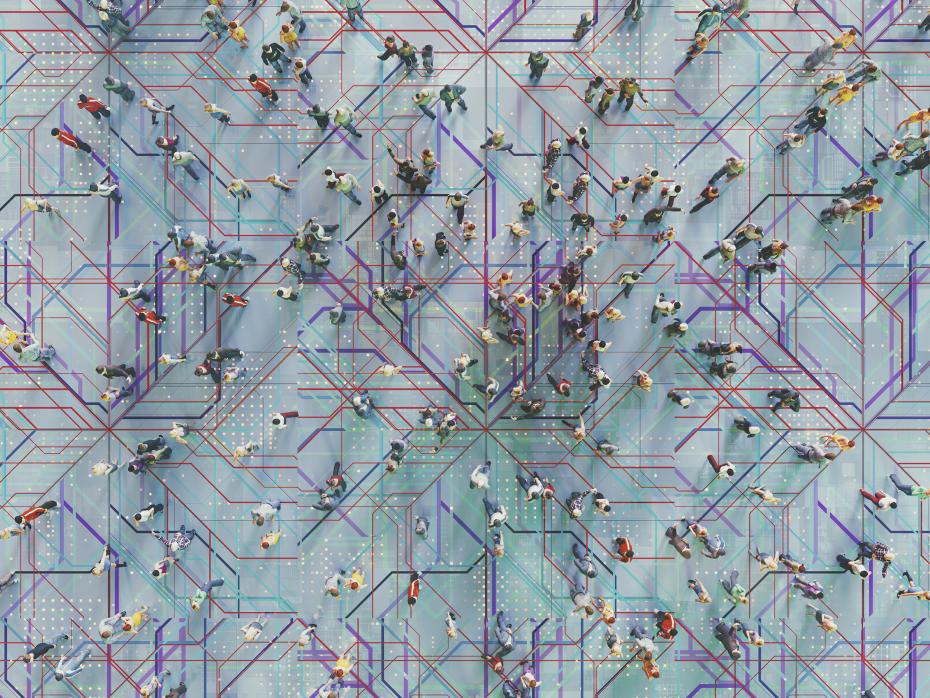The TikTok generation has grown up in a world saturated with digital content and rapid technological advancements. The way they interact with social media platforms reveals significant shifts in how they consume information, engage with brands and learn new concepts. This generation gravitates towards informal, authentic communication, often using pictures, emojis and memes to convey complex ideas quickly. They value interactivity and immediate response and thrive in a scroll culture, allowing quick scanning of large amounts of content. While they may have short attention spans, they often engage in binge consumption.
Understanding these traits is crucial for educators, as it informs the creation of content that aligns with the communication preferences and consumption habits of this generation. While short-form videos, flipped classrooms and interactive quizzes have already paved their way into higher education, a lesser-explored area is use of cliffhangers for building narrative momentum, leveraging curiosity and interrupting the scroll reflex.
- AcademiaTok: how to inspire Generation Z with academic research
- Let’s play! Using games to teach statistics and economics
- Resource collection: The post-pandemic university: how to serve the Covid generation
Cliffhangers help in transforming passive scrollers into engaged learners. This strategy leverages psychological principles, such as the curiosity gap and the Zeigarnik effect, which posit that interrupted tasks are more likely to be remembered. Clever narrative hooks, such as leaving questions unanswered and stories unfinished, tap into the natural curiosity of Gen Z and disrupt the automatic scroll reflex, making them pause and ponder what’s next. It’s like a reflective bump that turns fleeting attention into genuine interest.
And it’s not just about the pause. By adding some active anticipation, cliffhangers can help to create micro-commitments – little decision points that add up to longer engagement. This approach combats information overload by guiding focus to key points, all while providing natural breaks to prevent mental fatigue. By harnessing the power of cliffhangers, we’re not fighting against the scroll culture; we’re riding its wave, turning that restless energy into a force for learning.
Ready to see how this could revolutionise your next lesson? Well, read the section below to see an example session taken on wound healing with cliffhangers.
The TikTok generation craves fast-paced, creative information. By segmenting educational material into concise, high-impact units with integrated suspense elements, the cliffhanger approach serves as a bridge between traditional didactic methodologies and enhancing the appeal and effectiveness of learning experiences with abbreviated attention spans characteristic of modern learners.
Here’s a guide to using cliffhangers, using an example session on wound healing:
First 10 minutes: concrete experience
Learners watch a short, detailed video demonstrating proper wound cleaning and dressing techniques on a simulated wound.
Cliffhanger: At the end of the video, the narrator says: “Now that you’ve seen proper wound care technique, what crucial step do you think most people forget? The answer might surprise you, and it could mean the difference between quick healing and a nasty infection.”
Next 10 minutes: reflective observation
Learners write brief notes on what they observed in the video.
Cliffhanger: After learners finish their reflection, present this teaser: “You’ve just reflected on what you’ve observed. But there’s a hidden stage of wound healing that’s invisible to the naked eye, yet it’s the foundation of all healing. In our next section, we’ll reveal this secret stage and how it impacts everything that follows.”
Next 10 minutes: abstract conceptualisation
Learners read a concise infographic outlining the stages of wound healing. The infographic includes key points about what happens in each stage and how proper care supports the healing process.
(Infographic) cliffhanger: At the bottom of the infographic, include this intriguing note: “You’ve learned about the four stages of wound healing, but did you know there’s a fifth stage that can occur in some cases? It’s rare, but when it happens, it can completely change the healing process. Find out what it is and how to spot it in the next section.”
Next 10 minutes: active experimentation
Learners practise wound care techniques on a simple wound model (could be as basic as a marked area on their own skin or a partner’s arm). They go through the motions of cleaning and dressing a wound, applying what they learned from the video and infographic.
Cliffhanger: As learners finish their practice session, present this challenge: “You’ve now experienced wound care first hand. But there’s one advanced technique used by medical professionals that can dramatically speed up healing in certain types of wounds. In future sessions, we’ll explore this technique and when it’s appropriate to use.”
This session covers all stages of Kolb’s cycle and the added cliffhangers create curiosity, hint at additional complexity in the topic and connect each stage to the next, creating a cohesive learning experience. By incorporating these cliffhangers, we could maintain learner interest throughout the session and potentially beyond, as they might be curious about the advanced topics hinted at in the final cliffhanger.
Tasnim Mustafa is a medical undergraduate student; Mariam Shadan is assistant professor in biomedical sciences, both at Dubai Medical College for Girls.
If you would like advice and insight from academics and university staff delivered direct to your inbox each week, sign up for the Campus newsletter.




comment